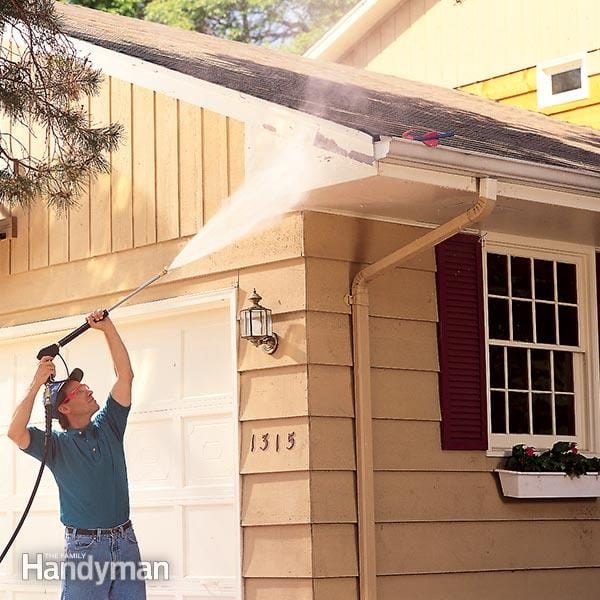Say goodbye to stubborn stains with comprehensive House Washing.
Say goodbye to stubborn stains with comprehensive House Washing.
Blog Article
Recognizing the Secret Differences In Between Pressure Washing and Residence Washing
The difference between pressure washing and residence washing is critical for property owners looking to keep their home's exterior. While pressure washing employs high-pressure water jets to get rid of stubborn crud from durable surface areas, residence washing makes use of a gentler strategy that includes eco-friendly cleansing representatives to shield even more delicate materials.
Definition of Pressure Washing
Pressure washing, commonly referred to as power washing, entails the usage of high-pressure water spray to eliminate dirt, crud, mold and mildew, mold, and various other impurities from various surface areas. This technique is especially efficient on tough surfaces such as concrete, block, and stone, making it a perfect option for cleaning up driveways, patios, and walkways. The procedure typically uses customized devices that generates water pressure varying from 1,500 to 3,000 psi or more, ensuring efficient cleansing even in challenging conditions.
Pressure washing is not restricted to exterior surfaces; it can additionally be employed for numerous applications, including automobiles, outside furnishings, and devices. Nevertheless, it is vital to note that the strength of the water pressure can possibly damage fragile surfaces, such as timber or repainted coatings, otherwise handled correctly. For that reason, selecting the suitable pressure setup and nozzle type is crucial for optimum outcomes.
Along with surface cleaning, pressure washing can additionally play a significant role in maintaining the long life of frameworks by protecting against the buildup of damaging pollutants that can cause wear and tear. On the whole, pressure washing acts as a powerful device for boosting cleanliness and protecting the stability of numerous surface areas.
Definition of Home Washing
Home washing refers to the thorough cleaning of a home's exterior surface areas, utilizing a combination of low-pressure water and specialized cleaning options. This technique is made to remove dirt, mold, mildew, algae, and other pollutants that accumulate with time, protecting the aesthetic charm and architectural stability of the building.
Unlike pressure washing, which employs high-pressure streams of water, house washing highlights using reduced pressure to avoid damages to fragile surface areas such as exterior siding, roof covering, and painted finishes. The cleaning services used are usually biodegradable and formulated to efficiently take on specific concerns, making sure an extensive tidy without endangering the setting or the stability of the products being treated.
House washing is specifically helpful for preserving the look of plastic, wood, stucco, and block exteriors. Regular home washing not only boosts visual appeal however additionally adds to the durability of a home's exterior surface areas by minimizing the results of dangerous microorganisms and toxic wastes. Home owners are motivated to arrange home washing regularly to ensure their building continues to be in ideal condition, thus guarding their investment.
Secret Methods Utilized
In the realm of outside cleansing, various methods are utilized to accomplish optimum results during residence washing. The primary approach entails soft pop over to this web-site washing, which makes use of low-pressure water integrated with specialized cleansing services. This technique successfully gets rid of dirt, algae, and mildew without destructive fragile surface areas such as wood or repainted home siding.
One more secret method is using a surface area cleaner accessory, which is specifically efficient for flat surface areas like patio areas and driveways. This tool provides consistent cleansing by making use of rotating jets that cover a bigger area, making sure consistent outcomes.
Chemical application is likewise vital in home washing. Cleaners such as salt hypochlorite or biodegradable cleaning agents are usually made use of to break down difficult spots and organic growth. House Washing. Correct dilution and application approaches are necessary to decrease any potential damage to plants or landscaping
Ideal Surfaces for every
Pressure washing, which utilizes high-pressure water jets, is ideal matched for hard, sturdy surfaces that can hold up against extreme pressure. These surface areas frequently accumulate challenging discolorations, such as oil, oil, and mold, which require the powerful cleansing action provided by pressure washing.
On the various other hand, house washing typically utilizes a softer technique, using low-pressure water integrated with specialized cleaning agents. This method is optimal for more delicate surfaces, consisting of repainted timber, vinyl exterior siding, and stucco. Home washing properly eliminates dirt, pollen, and mold without running the risk of damage to the outside finish. It is especially beneficial for areas where sensitive materials are included, as it minimizes the potential for chipping or removing paint.
Benefits and Disadvantages

On the various other hand, home washing makes use of a gentler strategy, often utilizing a mix of low-pressure water and cleansing solutions. important site This technique is much safer for painted surface areas, siding, and roofs, assisting to preserve their honesty. The main downside of residence washing is that it might not remove deeply ingrained dust or persistent stains as successfully as pressure washing, which can need even more time and several applications.

Verdict
In recap, pressure washing and home washing serve distinctive purposes in outside cleansing (House Washing). Pressure washing uses high-pressure water streams, making it ideal for resilient surface areas and reliable versus difficult discolorations.
Report this page